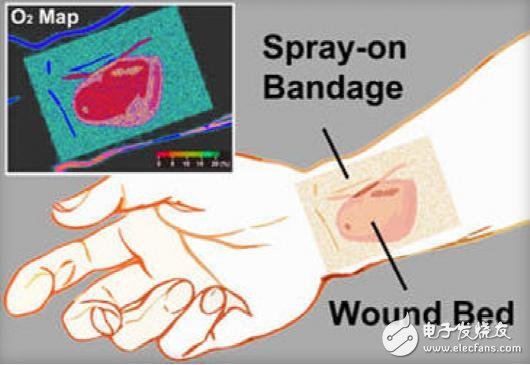Every one of us can't do without oxygen, not just for breathing. At the same time, oxygen is also the "helper" of our wound healing. Oxygen plays a key role in the healing process, whether your injury is burns, a knife wound or a surgical graft. So far, the way we judge whether the wound heals is to take the bandage and observe the wound. If the wound has not healed, it is very likely that the wound will be infected, leaving a scar that cannot be erased. Harvard Medical School professor Connor L. Evans has developed a distinctive bandage that allows us to check the healing without exposing the wound. This bandage incorporates a phosphor that absorbs light while releasing it. When there is a lack of oxygen in the wound, the phosphor in the bandage turns red, and if there is enough oxygen, it will show green light. This illuminating effect on the bandage is triggered by the "light source" developed by the researchers. Researchers say the light source can be captured by using a camera on a smartphone. They hope that this product will be used and promoted as soon as possible. In addition to being able to show the oxygen content of the wound, this bandage has other functions: it monitors the oxygen supply around the wound. For example, if there is a lack of oxygen in the wound, it can remind the doctor to pay more attention to the wound. Evans said the bandage can be applied to three areas. First of all, it is chronic trauma, such as trauma caused by diabetes. Evans said that this type of trauma will cost the health care system $25 billion a year. In addition, oxygen is also important for burns, especially if the wound needs to remove necrotic tissue to heal again. If there is no accurate assessment of oxidation, the doctor may "transition" to remove necrotic tissue, or to remove the weak, which will lead to decreased tissue function, and even left behind. Another area of ​​application is organizational migration. When the tissue is transplanted, new transplant areas are needed to provide sufficient oxygen to survive. If the blood supply or oxygen is insufficient, the transplanted tissue may cause cell necrosis. There are many reasons for the lack of oxygen supply, such as venous congestion. Therefore, it is very important to accurately determine the oxidation effect during tissue transplantation. Researchers are currently investigating wound coverings, which they call SMART bandages. In addition, they are developing more powerful phosphors to enhance the “oxygen sensing†function, which will add more parameters to the bandage, such as oxygen pH and bacterial content. Finally, the researchers are still developing new ways to allow the bandage to automatically apply to the wound. This technology prediction will bring some help to portable medical technology. Wuxi Lerin New Energy Technology Co.,Ltd. , https://www.lerin-tech.com